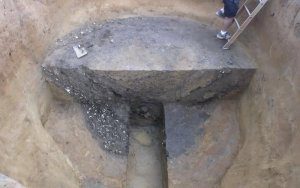
Archaeologists at the historic James Fort site of Jamestown in southern Virginia may be closing in on a well that was dug by the site’s early colonists during the formative years of America’s first successful English colony.
The prospect is tantalizing because, in the years that archaeologists have been conducting investigations and research at the site, several wells have been uncovered that yielded hundreds of thousands of artifacts, many of them among the most important and spectacular finds of the more than two-decade long excavation project.
Like historic trash middens (garbage dumps), wells often yield a motherlode of finds for archaeologists, because these are the concentrated places where the long-gone inhabitants deposited the refuse of their daily lives, from discarded belt buckles and broken pottery to whole pieces of body armor.
Now, the Jamestown Rediscovery team of archaeologists are closing in on a feature within a cellar built during the colony’s early years—a pit feature that is beginning to show the tell-tale signs of a square-shaped well.
“It’s a pretty good-sized pit,” says project Senior Archaeologist Danny Schmidt. “We only see a section of it, but you can tell it’s going to be a good-sized pit, maybe square in shape…….Why else would you have a pit within a pit unless you were going for water? Because it’s only a few more feet before you hit the water table.”*
__________________________________________
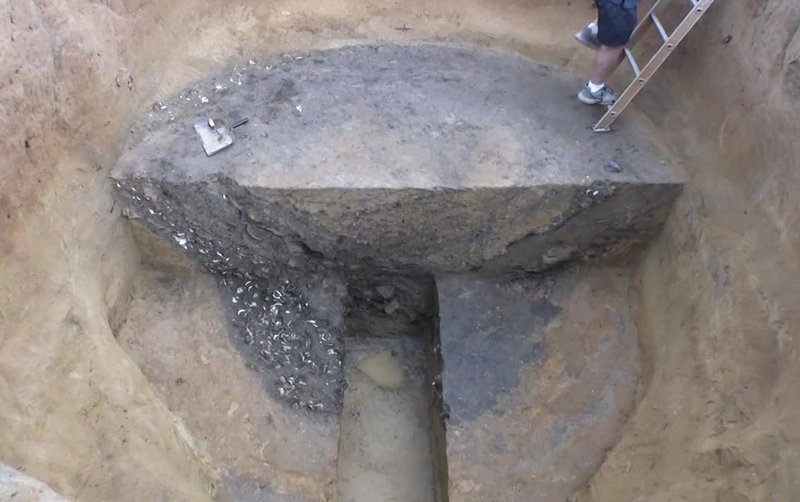 View of part of the cellar excavation. A still screenshot from the related YouTube video (see below).
View of part of the cellar excavation. A still screenshot from the related YouTube video (see below).
________________________________________________________
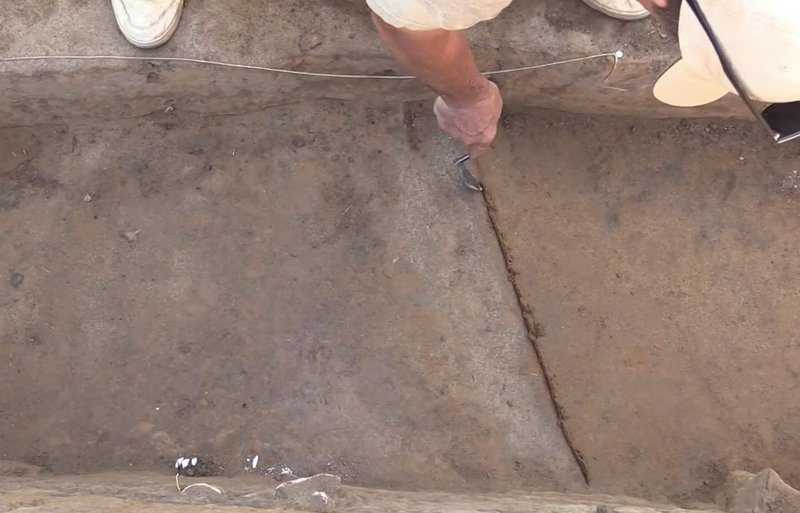 The tell-tale sign of part of one side of a possible well feature. A still screenshot from the related YouTube video (see below).
The tell-tale sign of part of one side of a possible well feature. A still screenshot from the related YouTube video (see below).
________________________________________________________
Two other reasons hint at the possibility of a well: In previous excavation seasons, archaeologists came across two other wells that exhibited similar signs as they dug—one, the first well, was located in a cellar within the original James Fort footprint, and the other, the second well, also constructed within the James Fort, was square-shaped and framed with shaped oak timbers.
__________________________________________
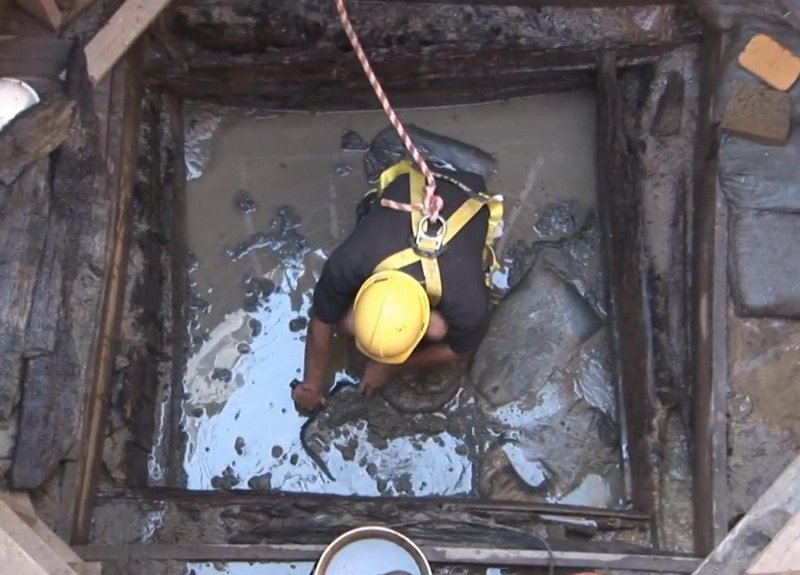 The second well, excavated during a previous season. A still screenshot from the related YouTube video (see below).
The second well, excavated during a previous season. A still screenshot from the related YouTube video (see below).
__________________________________________________________
The cellar in which the possible well is located is part of a structure that was built just outside of the original triangular palisade construction of the early James Fort, when colonists were renovating the fort into a new five-sided design. The structure resembles another structure excavated by archaeologists, called the “factory”, found years ago outside the southeast bulwark of the original fort.
Evidence for this newest structure emerged as they began to uncover postholes for long-vanished timbers that would have supported a 22-by-14 foot building incorporated into the fort palisade that was extended as part of the new five-sided fort.
The cellar feature within the newly excavated structure appears to have been about seven feet deep below the original surface of early Jamestown, according to the archaeologists. Artifacts recovered thus far from the excavation of the structure include large fragments of a Bartmann jug (commonly used during the early 17th century), well-shaped dice made out of bone (once used as gaming pieces by the colonists), and a copper alloy buckle still complete with its tongue.
__________________________________________
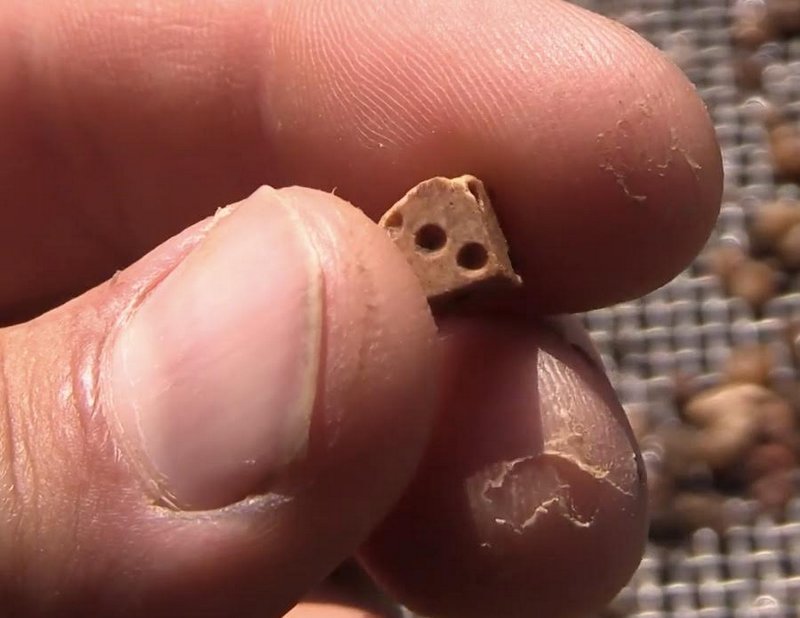 Excavated bone dice. A still screenshot from the related YouTube video (see below).
Excavated bone dice. A still screenshot from the related YouTube video (see below).
________________________________________________________
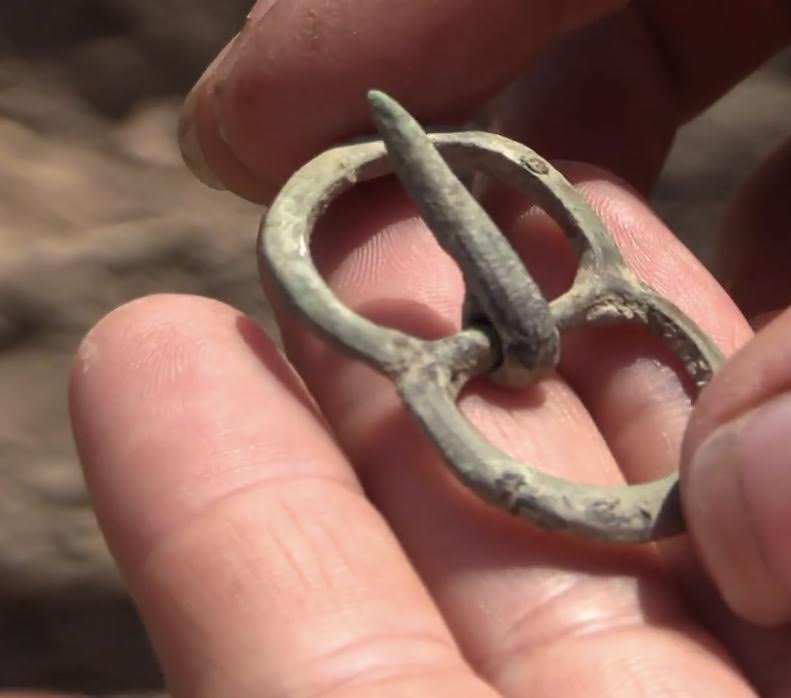 The copper alloy buckle. A still sreenshot from the related YouTube video (see below).
The copper alloy buckle. A still sreenshot from the related YouTube video (see below).
________________________________________________________
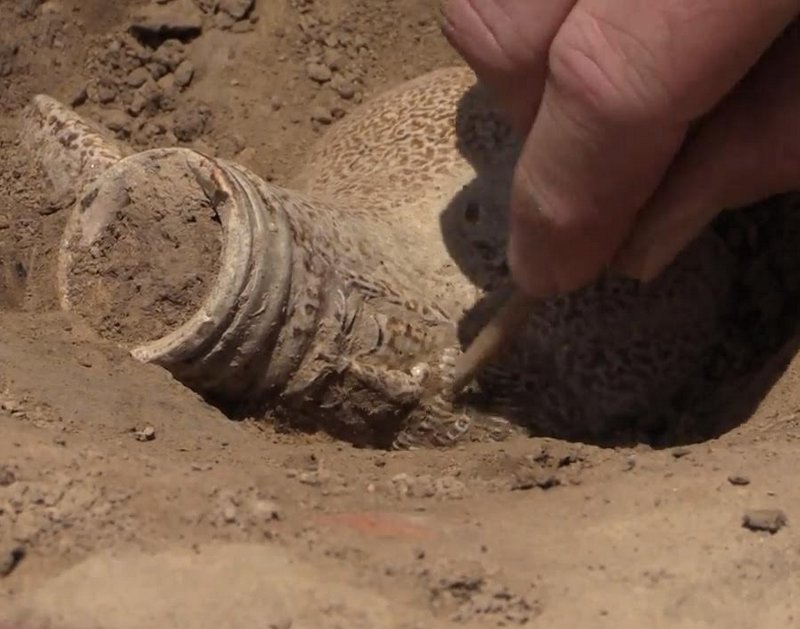 Excavation of the Bartmann jug. A still screenshot from the related YouTube Video (see below).
Excavation of the Bartmann jug. A still screenshot from the related YouTube Video (see below).
________________________________________________________
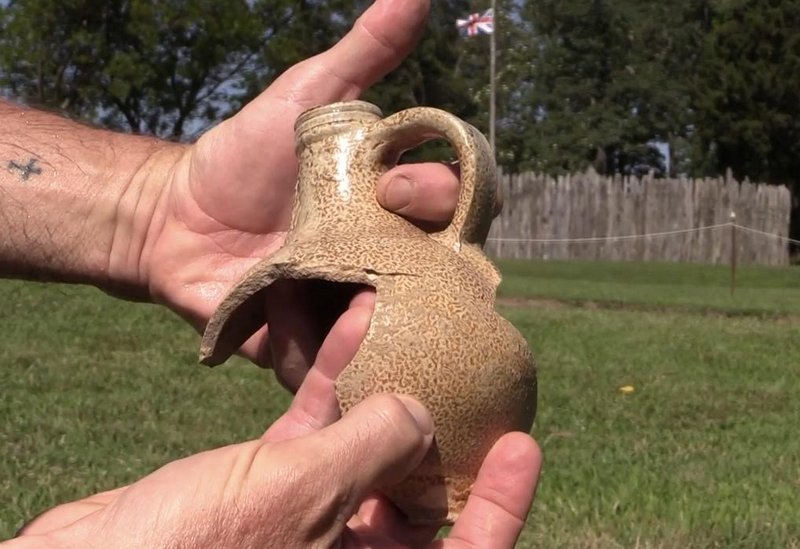 Excavated fragments of the Bartmann jug fit perfectly together. A still screenshot from the related YouTube video (see below)
Excavated fragments of the Bartmann jug fit perfectly together. A still screenshot from the related YouTube video (see below)
________________________________________________________
Readers can read more about it at the Jamestown Rediscovery website.
________________________________________________________
________________________________________________________
*Comments of Danny Schmidt from the related YouTube video (see above) and the Jamestown Rediscovery news release.
________________________________________________________
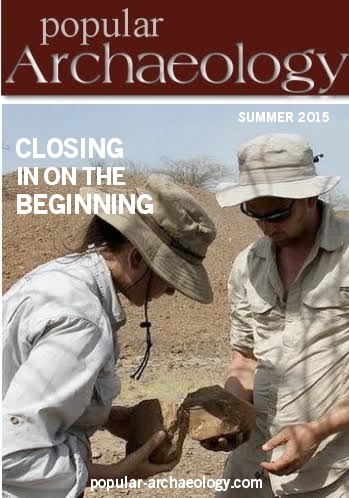 Read more in-depth articles about archaeology with a premium subscription to Popular Archaeology Magazine.
Read more in-depth articles about archaeology with a premium subscription to Popular Archaeology Magazine.
In addition, the latest Popular Archaeology ebook is now available.
______________________________________________
Travel and learn with Far Horizons.
____________________________________________
 Popular Archaeology’s annual Discovery Edition eBook is a selection of the best stories published in Popular Archaeology Magazine in past issues, with an emphasis on some of the most significant, groundbreaking, or fascinating discoveries in the fields of archaeology and paleoanthropology and related fields. At least some of the articles have been updated or revised specifically for the Discovery edition. We can confidently say that there is no other single issue of an archaeology-related magazine, paper print or online, that contains as much major feature article content as this one. The latest issue, volume 2, has just been released. Go to the Discovery edition page for more information.
Popular Archaeology’s annual Discovery Edition eBook is a selection of the best stories published in Popular Archaeology Magazine in past issues, with an emphasis on some of the most significant, groundbreaking, or fascinating discoveries in the fields of archaeology and paleoanthropology and related fields. At least some of the articles have been updated or revised specifically for the Discovery edition. We can confidently say that there is no other single issue of an archaeology-related magazine, paper print or online, that contains as much major feature article content as this one. The latest issue, volume 2, has just been released. Go to the Discovery edition page for more information.
____________________________________________






